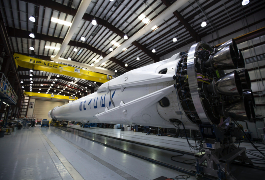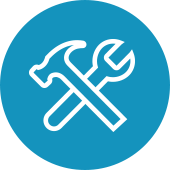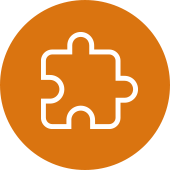스포트라이트
항공 엔지니어, 항공 우주 엔지니어, 항공 우주 응력 엔지니어, 항공 전자 공학 엔지니어, 설계 엔지니어, 비행 제어 엔지니어, 비행 테스트 엔지니어, 구조 분석 엔지니어, 시스템 엔지니어, 테스트 엔지니어
항공우주 엔지니어의 노력이 없었다면 우리가 알고 있는 세상은 크게 달라졌을 것입니다. 승객들이 지구상의 어느 곳이든 쉽게 이동할 수 있는 비행기는 더 이상 존재하지 않습니다. 통신, 내비게이션, 환경 모니터링, 국방을 지원하는 인공위성도 더 이상 존재하지 않습니다. 물론 우주 탐사도 더 이상 할 수 없습니다. 현대 사회에 대한 항공우주 엔지니어의 공헌을 가끔은 기억하지 못할 수도 있지만, 그들이 없었다면 우리는 분명 알아차렸을 것입니다!
대체로 이 분야의 종사자는 다음 중 하나를 전문으로 합니다. 항공 (즉, 상업용 또는 군용 항공기 및 추진 시스템) 또는 우주 (위성을 포함한 미사일 및 우주선) 엔지니어링을 전공합니다. 두 전문 분야 간에는 많은 차이점이 있지만, 두 분야 모두에 적용되는 물리학의 공통된 원리가 많이 있습니다.
항공우주 엔지니어는 재료, 공기역학적 유체 흐름, 열역학, 천체 역학, 구조 설계, 항법, 안내 및 제어, 추진, 연소 등 여러 하위 분야를 전문적으로 연구할 수 있습니다. 항공우주공학은 매우 다양한 분야를 다루고 있으며, 가장 어려운 공학 전공 중 하나로 꼽힙니다. 하지만 직업 전망 탄탄하고 급여도 인상적이며 직업 만족도 높이 날아보세요!
- 우주 탐사 역량 강화
- 사람들이 비즈니스 또는 개인적인 이유로 전 세계를 여행할 수 있도록 지원
- 위성을 통한 정확한 내비게이션 기능 보장
- 큰 수입 잠재력
- 성취감
- 거의 모든 사람에게 영향을 미치는 역동적인 분야에서 일하기
- 위험 기상 조건을 파악하여 영향을 받는 주민들에게 미리 경고를 보낼 수 있는 기술과의 협력
근무 일정
- 항공우주 엔지니어는 일반적으로 풀타임으로 근무하며, 프로젝트가 기간 내에 완료되고 작업이 설계 및 성능 표준을 충족하는지 확인하기 위해 경우에 따라 초과 근무를 해야 합니다.
일반적인 의무
- 기술 제안서를 검토하여 실행 가능성, 안전성, 예산 고려 사항, 환경 정책 준수 여부를 결정합니다.
- 회사가 고객의 요구 사항을 완벽하게 충족할 수 있는지 판단하기
- 설계부터 제작, 제조, 테스트까지 항공기/항공우주 부품, 장비 및 차량의 수명 주기를 감독합니다.
- 항공우주 공학 원칙에 따른 제품 설계 분석
- 가장 적합한 솔루션 소싱을 위한 벤더 및 공급업체 조사
- 품질 보증 및 테스트 기준을 설정하고 설계가 기준을 충족하는지 확인합니다.
- 완료 기간을 설정하고 진행 상황을 추적하세요.
- 수학 모델 또는 컴퓨터 분석을 사용하여 제품 및 시스템 설계
- 테스트와 실험을 실행하여 예상되는 스트레스 요인을 견디면서 프로토타입이 사양에 맞게 작동하는지 확인합니다.
- 오작동 또는 손상으로 인해 매개 변수 내에서 작동하지 않는 부품 또는 제품을 조사하고, 진단을 수행하고, 문제를 해결하고, 검사합니다.
- 보고서 작성 및 문서와 기록 관리
- 항공 우주가 환경에 미치는 영향을 연구하고 배출량을 줄일 수 있는 방법을 지속적으로 모색합니다.
- 대체 연료의 실행 가능성 평가하기
추가 책임
- 새로운 항공우주 기술 및 잠재적 역량을 연구하고 개발합니다.
- 필요에 따라 다른 팀원을 교육하고 감독합니다.
- 업계 변화 및 기술 발전에 대한 최신 정보 유지
- 전문 조직 행사에 참석하여 정보를 공유하고 다른 사람들로부터 배웁니다.
소프트 스킬
- 활동 조정
- 분석
- 세부 사항에주의
- 비즈니스 통찰력
- 합작
- 창조성
- 비판적 사고
- 결정적인
- 연역적 및 귀납적 추론
- 디테일 지향
- 독립의
- 모니터링
- 목표
- 조직
- 환자
- 통찰력
- 문제 해결
- 독
- 안전 지향
- 강력한 의사 소통 기술
- 시각화
기술 능력
- 항공우주 제품 및 부품 제조
- 엔지니어링 서비스
- 우편 서비스를 제외한 연방 정부
- 내비게이션, 측정, 전자 의료 및 제어 기기 제조
- 물리, 공학 및 생명과학 분야의 연구 개발
- 항공우주 제품, 부품 및 관련 제조 분야
- 방위 계약업체(예: 보잉, 에어버스, 록히드 마틴, 제너럴 다이내믹스, GE 항공, 노스롭 그루먼, 레이시온 등)
- 엔지니어링 서비스
- 정부 기관(NASA, 국가지리정보국, 국가정찰국 등) 미 공군, 미 우주군 등)
- 민간 기업(예: SpaceX, 블루 오리진, 버진 갤럭틱 등)
- 연구 개발 센터
항공우주공학의 영역에서는 위험이 매우 높습니다! 우리가 타고 다니는 비행기, 즉 머리 위를 날아다니는 비행기를 책임지는 이 전문가들의 손에 수많은 사람의 안전이 달려 있습니다!
이들은 안전한 로켓과 미사일 발사를 보장하고 외국 군대를 억제할 수 있는 항공기를 개발하는 임무를 맡고 있습니다. 항공우주 엔지니어는 업무의 민감한 특성으로 인해 신원 조회가 필요한 보안 허가를 받아야 하는 경우가 많습니다. 또한 보안 허가에 영향을 미치고 고용 가능성을 위태롭게 하는 행동 중 몇 가지를 예로 들면, 올바른 개인 행동, 부채 관리, 이해 상충 또는 보안 위반 방지, 약물 또는 알코올 관련 사건으로부터 멀리 떨어져 있는 것 등을 통해 보안 허가를 유지해야 합니다.
이 분야의 공통적인 희생은 잦은 이동이 필요하다는 점입니다. 항공우주 산업은 수요와 경제 요인에 따라 기복을 경험할 수 있습니다. 2017년에는 업계 최고의 기업들이 비용 절감을 위해 엔지니어를 해고하면서 많은 근로자가 일자리를 찾기 위해 이직해야 했습니다. 때로는 자신의 고유한 기술에 적합한 일자리를 찾기 위해 해외로 이주하는 근로자도 있습니다.
자동화는 어디에나 존재하며 항공우주 산업은 이를 최대한 활용하고 있습니다. 자동화 기술과 프로세스 덕분에 항공우주 제조와 관련된 작업장 내 위험을 줄일 수 있어 사람이 더 안전한 작업에 집중할 수 있습니다. 이러한 추세는 앞으로도 계속될 것으로 예상되므로 엔지니어는 자동화가 업무에 어떤 영향을 미칠 수 있는지 항상 파악하고 있어야 합니다.
거의 모든 산업에 영향을 미치는 또 다른 트렌드는 환경 친화적인 비즈니스를 추구하는 것입니다. BBC에 따르면 "전 세계 이산화탄소 배출량의 약 2.4%가 항공에서 발생합니다." 다른 가스 및 증기 흔적과 함께 항공이 지구 온난화의 약 5%를 차지한다는 연구 결과도 있습니다. 그렇기 때문에 업계에서는 항공기 연료 소비를 줄이고 배출량을 줄일 수 있는 더 가볍고 튼튼한 소재를 지속적으로 찾고 있습니다.
세 번째 주요 변화는 전체 제조 시간을 단축하는 동시에 특정 구성 요소의 품질을 높이기 위해 엔지니어링 서비스 아웃소싱이 증가하고 있다는 점입니다. 업무가 아웃소싱될 때마다 엔지니어는 장단기적으로 자신의 업무에 어떤 영향을 미치는지 주의 깊게 살펴봐야 합니다.
비행과 우주 탐험에 대한 사랑으로 수많은 항공우주 엔지니어가 이 흥미진진한 학문에 도전하여 위대한 업적을 남긴 인물들의 대열에 합류하게 되었습니다. 어린 시절, 엔지니어가 되고자 했던 이들은 공상 과학 팬이자 항공 및 우주 분야의 업적을 남기는 데 기여하고 싶다는 열망을 가진 항공 애호가였을 것입니다. 언젠가 항공우주 커뮤니티에 합류하여 세상을 혁신할 차세대 기술 혁신을 연구할 수 있을지 궁금해했을 수도 있습니다. 엔지니어로서 그들은 무언가를 만지고, 기계의 작동 원리를 배우고, 개선 방법을 알아내는 것을 즐겼을 것입니다.
- 항공우주 엔지니어는 ABET 인증 항공우주공학 또는 이와 밀접한 관련이 있는 공학 분야의 학사 학위가 필요합니다.
- 많은 학생들이 시간과 비용을 절약할 수 있는 학사/석사 복수 학위 과정을 선택합니다.
- 일반적으로 예상되는 수업은 다음과 같습니다:
- 음향
- 공기역학
- 천체 역학
- 연소
- 안내 및 제어
- 계측
- 재료
- 역학
- 탐색
- 추진력
- 로봇공학
- 열역학
- 많은 프로그램이 업계의 현지 기업과 협력하여 학생들의 이해를 높이고 실무 능력을 개발할 수 있는 인턴십 및 협력 경험을 제공합니다.
- 학업 및 업무 전제 조건에 따라 선택적으로 자격증을 취득할 수 있습니다:
- 항공우주 의학 협회 - 항공우주 생리학 자격증
- 미국 품질 협회 - 공인 신뢰성 엔지니어
- 국제 미국 기계학회 - 기하학적 치수 및 공차 전문가 - 기술자
- 에타 인터내셔널 -
- ARINC 광섬유 기술자
- 광케이블 평가 및 종단면 청소
- 국토지리정보원 - GEOINT 전문 자격증 항공
- 미국 가치 엔지니어 협회 -
- 공인 가치 전문가
- 가치 방법론 준회원 인증
- SpaceTEC -
- 복합재 인증
- 항공우주 제조
- 차량 처리 인증
- 특히 방위 산업 분야의 일부 항공우주 고용주는 근로자에게 철저한 신원 조회를 통과하고 보안 허가를 받도록 요구합니다.
- 일부 허가 상황에서는 시민권이 필요할 수 있습니다.
- 수업료, 할인 및 지역 장학금 기회 비용을 고려하십시오 (연방 지원 이외에)
- 캠퍼스 내, 온라인 또는 하이브리드 프로그램에 등록할지 여부를 결정할 때는 자신의 일정과 유연성을 고려하세요. 많은 항공우주공학 개념은 직접 만나서 배우는 것이 가장 효과적입니다.
- 프로그램의 교수진 상과 업적을 확인하여 그들이 무엇을 했는지 확인하십시오.
- 캠퍼스에서 참석하는 경우, 프로그램의 시설과 장비를 확인하세요.
- 취업 알선 통계 및 프로그램의 동문 네트워크에 대한 세부 정보를 검토하십시오.
- 팀으로 효과적으로 일하고 프로젝트를 관리하는 방법을 배울 수 있는 학교 활동 자원봉사에 참여하세요.
- 화학, 물리학, 고급 수학, 컴퓨터 프로그래밍, 제도 및 작문 분야의 고등학교 수업에 등록하세요.
- 대학에서 인턴십과 협력 경험을 찾아보세요.
- 제조 시설에서 아르바이트 경험을 쌓고 운영에 대해 배워보세요.
- 미래의 직업 추천서가 될 수있는 사람들의 이름과 연락처 정보를 적어 두십시오.
- 항공우주공학의 다양한 측면과 관련된 책, 기사 및 비디오 튜토리얼을 학습하세요.
- 항공우주 공학은 광범위한 분야이므로 자신에게 맞는 분야를 전문적으로 연구하세요.
- 가능한 한 빨리 전문 분야를 정하고 그에 따라 교육을 맞춤화하세요.
- 잠재적 고용주 목록을 작성한 다음, 해당 고용주의 웹사이트 채용 페이지를 검토하세요.
- 노련한 엔지니어에게 어떻게 시작하게 되었는지, 그들의 일상은 어떤지 들어보세요.
- 전문 단체에 가입하여 배우고, 공유하고, 친구를 사귀고, 네트워크를 확장하세요( 리소스 > 웹사이트 목록 참조).
- 가능한 한 관련 자격증을 취득하여 자격을 강화하고 취업 시장에서 경쟁력을 높이세요.
- 이력서 초안 작성을 일찍 시작하고 진행하면서 계속 추가하여 아무 것도 놓치지 않도록 하십시오.

- 네트워크에 일할 준비가 되었다고 알리세요!
- 인디드, 심플리 하이어드, 글래스도어, 지피아 등 취업 포털 및 관련 전문 기관 구인 게시판에 프로필을 등록하세요.
- 자신의 전문 분야와 관련된 일자리를 찾아보세요. 광고를 신중하게 살펴보고 자격을 갖춘 경우에만 지원하세요.
- 모든 고용주에게 동일한 이력서를 보내는 대신 지원하려는 직무에 맞게 이력서를 맞춤 설정하세요.
- 항공우주 관련 견습직이나 협동조합 경험은 취업에 도움이 될 수 있습니다. 이력서에 멋지게 보일 뿐 아니라 나중에 개인 추천서를 받을 수도 있습니다. 나중에 해당 회사에서 채용 제의를 받을 수도 있습니다!
- 현직 항공우주 엔지니어에게 연락하여 구직 팁을 구하세요.
- 가장 많은 일자리가 있는 곳으로 이동하세요! 상위 고용주들이 주로 어디에 기반을 두고 있는지 알아보세요.
- 항공우주 엔지니어의 고용 수준이 가장 높은 주는 캘리포니아, 텍사스, 플로리다, 워싱턴, 앨라배마입니다.
- 많은 대기업이 지역 프로그램 졸업생을 채용하므로 대학 프로그램이나 커리어 센터에 문의하여 채용 담당자 및 취업 박람회와의 연결에 도움을 요청하세요.
- 이력서 작성 및 모의 면접에 대한 지원도 제공할 수 있습니다.
- 항공우주 엔지니어 이력서 템플릿을 검토하여 문구 및 형식에 대한 아이디어를 얻으세요.
- 이력서에 모든 교육, 기술, 훈련 및 경력 나열
- 전문 이력서 작가나 편집자에게 이력서 초안을 작성하거나 검토를 받는 것이 좋습니다.
- 전직 교사 및 상사에게 추천인 역할을 해줄 수 있는지 미리 물어보세요. 허락 없이 연락처 정보를 기재하여 상대방의 방심을 사지 마세요.
- 항공우주 엔지니어 면접 질문을 공부하여 어떤 질문을 받을 수 있는지 알아보세요.
- Quora에 계정을 만들어 현업 종사자에게 직무 조언을 구하세요.
- 면접 성공을 위한 적절한 복장!
- 원하는 승진 유형에 따라 전문 엔지니어링 자격증이 도움이 될 수 있습니다. 이를 위해서는 ABET 공인 학사 학위와 4년의 실무 경력에 더해 공학 기초 및 전문 엔지니어링의 두 가지 시험에 합격해야 합니다.
- 온라인 과정, 석사 학위 또는 고급 자격증을 통해 기술 변화를 파악하세요.
- 정확하고 책임감 있고 신뢰할 수 있으며 혁신적인 엔지니어로 명성을 쌓으세요.
- 선배 엔지니어로부터 모든 것을 배워보세요. 평생 학습자의 사고방식 개발하기
- 회사 내에서는 물론 비즈니스 파트너, 이해관계자, 업계 전반과도 강력한 관계를 구축하세요.
- 상황에 따라 리더십과 팀워크를 발휘하세요. 높은 기준을 제시하고 다른 사람들이 따를 수 있도록 모범을 보이세요.
- 행사에서 강연하고, 기사를 게시하고, 해당 분야에 기여함으로써 전문 조직과 관계를 유지하세요.
- 직업적 평판을 높이는 데 도움이 되는 상을 수상하세요
상사 또는 관리자와 대화를 예약하여 승진 기회에 대해 논의하세요. - 필요하다면 승진 가능성이 더 높은 새로운 직무에 지원하는 것도 고려해 보세요. 새로운 주 또는 새로운 국가로 이사할 의향이 있을 수도 있습니다!
웹사이트
- 공학 및 기술 인증 위원회 (ABET)
- 항공우주 산업 협회
- 항공기 전자 협회
- 항공기 소유자 및 조종사 협회
- 공군 및 우주군 협회
- 미국 항공 우주 학회
- 아메리칸 인디언 과학 및 공학 협회
- 미국 항공 우주 연구소
- 미국 공학 교육 학회
- 미국 기계학회 항공우주 부문
- 무인 차량 시스템 국제 협회
- 지속 가능한 세상을 위한 엔지니어
- 실험용 항공기 협회
- 일반 항공 제조업체 협회
- MAES - 공학 및 과학 분야의 라틴계
- 엔지니어링 및 측량을위한 전국 심사관 협의회
- 미국 흑인 엔지니어 협회
- 국립 전문 엔지니어 협회
- SAE 인터내셔널
- 비행 테스트 엔지니어 협회
- 히스패닉 전문 엔지니어 협회
- 여성 엔지니어 협회
- 기술 학생 협회
- 수직 비행 사회
책
- 항공 우주 공학의 기초, 알리 바체사라, 프란시스코 갈라르도 로페즈 외.
- 우주 수학: 우주 과학에 기반한 수학 문제, 작성자: Bernice Kastner
- 항공우주 엔지니어를 위한 표준 핸드북, 브리즈 아그라왈과 맥스 플래처 저
모든 엔지니어링 직무와 마찬가지로 항공우주 엔지니어의 역할은 매우 도전적이고 위험 부담이 큽니다. 개인적인 보람과 성취감은 대단할 수 있지만, 이 직업이 모든 사람에게 적합한 것은 아닙니다. 미국 노동통계국에서는 엔지니어링 분야의 진로를 탐색하고자 하는 분들을 위해 몇 가지 관련 직업을 소개합니다.
- 항공우주 엔지니어링 및 운영 기술자
- 건축 및 엔지니어링 관리자
- 컴퓨터 하드웨어 엔지니어
- 전기 및 전자 공학 기술자
- 전기 및 전자 엔지니어
- 산업 엔지니어
- 재료 엔지니어
- 기계 엔지니어
뉴스 피드

주요 채용 정보

온라인 과정 및 도구







